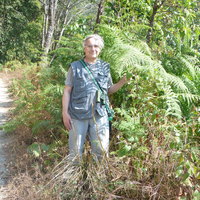Nikolay Sobolev
Institute of Geography, Moscow, Russia, лаборатория биогеографии, Department Member
The transition from the Soviet to the post-Soviet period in and near Moscow manifested itself in increasing production of segregated space both in the urban core and suburban areas outside of the beltway to accommodate the preferences of... more
The transition from the Soviet to the post-Soviet period in and near Moscow manifested itself in increasing production of segregated space both in the urban core and suburban areas outside of the beltway to accommodate the preferences of the new Russian business and governmental elite. This paper focuses on the residential single-family housing inside old and new settlements, which are frequently gated. Approximately 260 of such suburban communities have been developed within 30 km of the beltway during the past few years, of which a majority have some form of exclusion mechanism in place, typically tall solid fences, gates, closed-circuit video surveillance and guarded entry checkpoints. The difference in exclusivity varies from the most exclusive older communities inside Moscow Serebryany Bor enclave and Rublevskoe highway mansions to less exclusive new developments along Novorizkhskoe and Dmitrovskoe highways. Despite high rates of construction, based on sociological surveys in 2003, only about 11% of Russia’s upper class claimed to live in such new “cottages,” with the rest owning condos and luxury apartments in the inner city or older detached homes in villages and small towns. Therefore, not all the needs have been accommodated and more development is certain to take place. The environmental impact of such developments is profound. Based on preliminary LANDSAT image analysis, almost 22% of suburban “green belt” forested land within 30 km zone has been converted to new construction from 1991 to 2001. New construction is now focusing on the remaining fragments of natural vegetation, which will likely lower air quality and water quality available for the city. Ironically, the new developments advertise themselves as “clean and green” with massive investments in unnatural landscaping (seeded lawns, exotic shrubs, river and lake shore “improvements”). This investment highlights the well-known paradox of development in which people move out of town to live near nature, while destroying the wild nature they come to enjoy.
